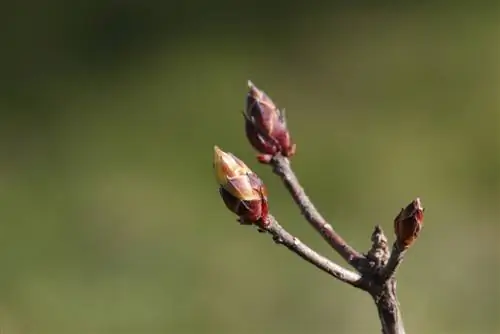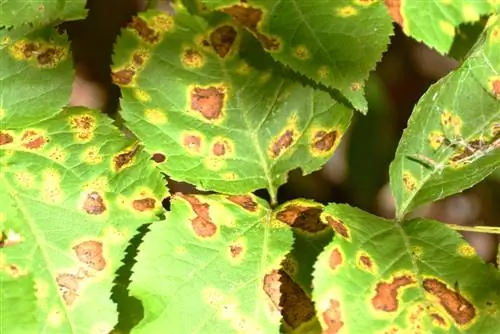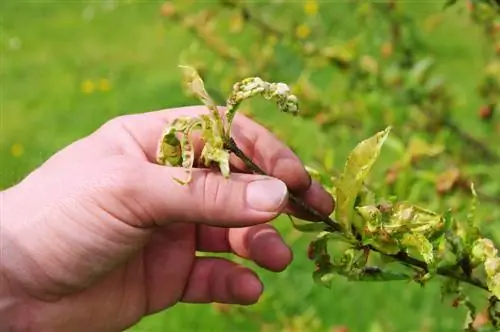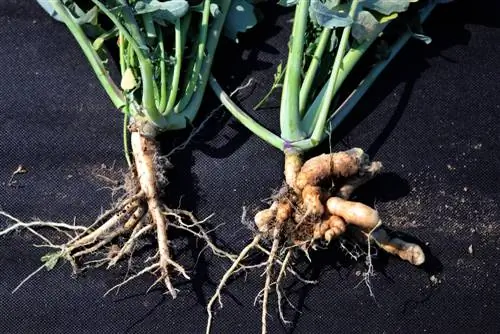- Author admin [email protected].
- Public 2023-12-16 16:46.
- Last modified 2025-01-23 11:22.
Azaleas are impressive flowering shrubs and can be found in many homes, gardens and parks. If you suffer from unusually large growths, you need to act quickly. Find out everything about earlobe disease here, how to recognize it clearly and how to react correctly if it is affected.
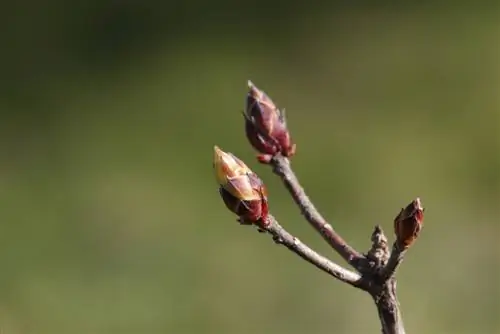
What is azalea earlobe disease and how to treat it?
Azalea earlobe disease is caused by the fungus Exobasidium japonicum and manifests itself as thick, bulging growths on leaves. To treat, remove affected parts of the plant and pay attention to he althy care to prevent re-infestation.
What causes earlobe disease on azaleas?
Earlobe disease is caused by thefungus Exobasidium japonocum. The fungus spreadsinside the plantandcauses exceptionally expanding cell division, which manifests itself as bulging or fleshy growths on the leaves or branches. In fact, the fungus grows between the cells (intercellular) and feeds on the inside of the cell via individual sinks. As it spreads further, a whitish coating forms on the growth. Due to increased humidity, the fungus likes to attack densely overgrown parts of the plant in the lower area.
How does earlobe disease manifest itself on azaleas?
Earlobe disease lives up to its name. If the azalea is suffering from the fungus, you can tell by thestrangely deformed leaves, which look likethick, bulging earlobes. Theyellowish-green growths are clearly visible on the young leaves of the plant. Older leaves are less affected. Later, a whitish coating forms on the infected parts of the plant, which is caused by the fungal spores. If these have already appeared, you should act quickly and be careful not to spread the spores any further.
How do I save my azalea that has earlobe disease?
Since the fungus usually overwinters in the buds of the azalea and emerges with the first warm, humid days, you should check your plant regularly in April and May for external signsIf you discover an infestation, you should remove theaffected parts immediately Use sharp, disinfected scissors and dispose of the sections in household waste. Under no circumstances should infected leaves end up in the compost, as they can spread further and infect other plants.
How do I prevent earlobe disease on the azalea?
If you keep your azaleahe althy and strong with proper care, it will be more resistant to diseases and pests. If earlobe disease breaks out, mechanical removal of the affected plant parts is often sufficient and no further treatment is required. In general, azaleas require the following care:
- Water the plant regularly with rainwater or low-lime tap water to keep it moist at all times.
- Avoid waterlogging and direct sunlight.
- Fertilize about every two weeks in summer.
Tip
These types of azaleas are particularly vulnerable
The Japanese azaleas (Azalea Japonica) “Brilliant”, “Diamond” and “Mother's Day” are extremely sensitive to earlobe disease. If your azalea is one of the varieties mentioned, you should pay special attention to it. Check the plant at short intervals and regularly remove affected parts of the plant such as leaves, buds, flowers or parts of branches. If the fungus does not disappear, ask your specialist retailer for a suitable fungicide.

